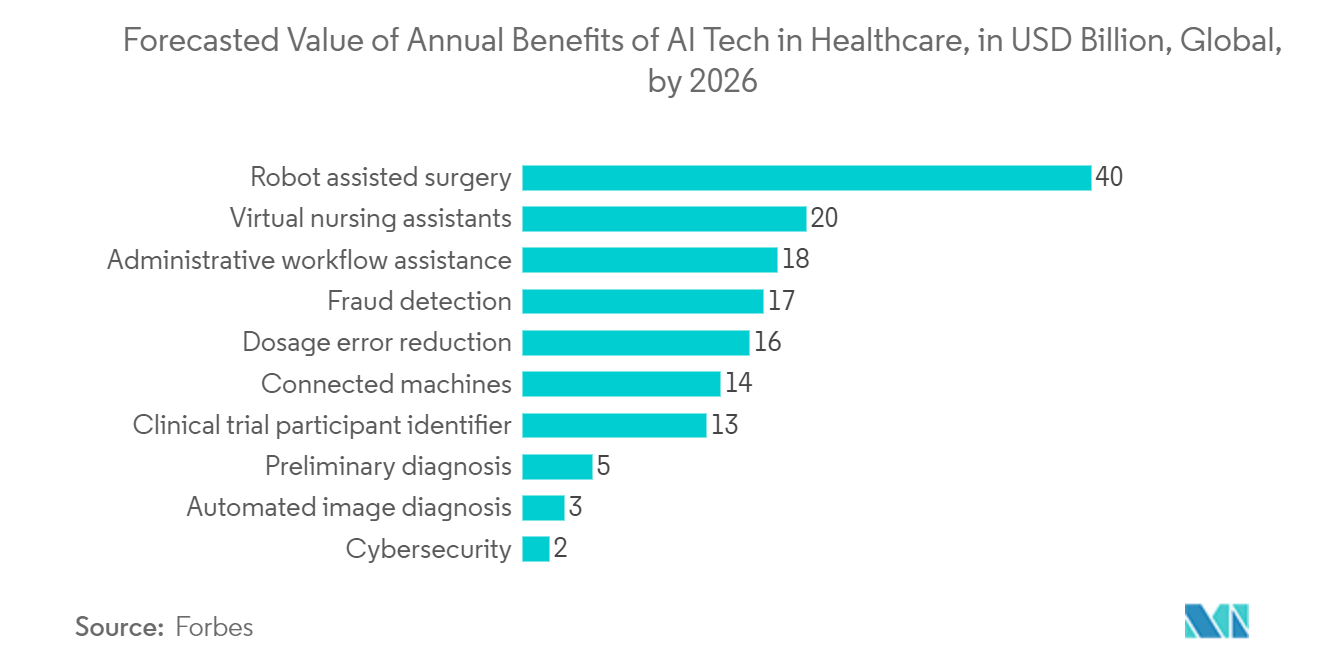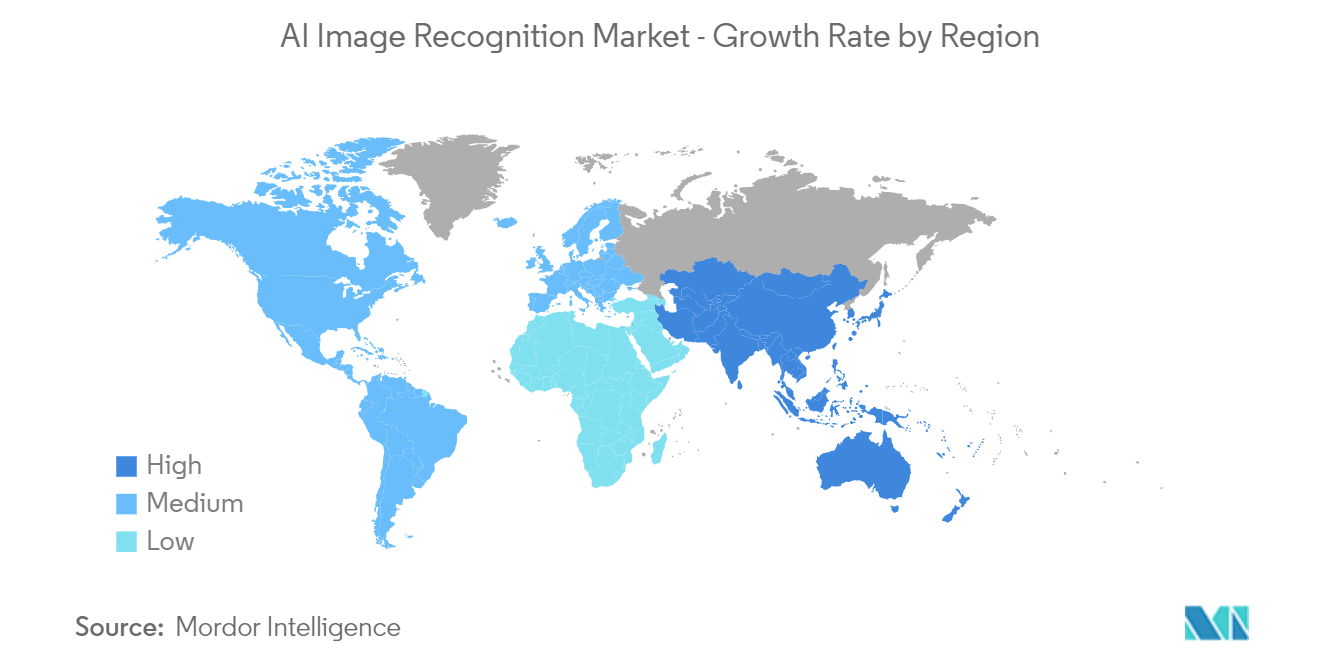Market Trends of AI Image Recognition Industry
Healthcare Sector is Expected to Witness Significant Growth
- The adoption of AI image recognition technology in the healthcare sector is rapidly growing globally, owing to a wide range of applications for artificial intelligence image recognition technology in CT scans, X-rays, ultrasound, and magnetic resonance imaging. Furthermore, from improved security and patient identification to better patient monitoring and diagnosis, AI image recognition technology has helped improve the patient experience and reduce the workload for healthcare workers.
- Additionally, AI image recognition models can assist in diagnosing various conditions. The models can be trained and deployed to scan images from MRI or X-ray machines and other visual outputs to detect, locate, and flag up medical abnormalities the model has been trained to identify. For instance, it can identify the number and exact locations of tumors within an image, helping to direct the medical practitioner's attention to the malignant or cancerous elements.
- Furthermore, AI image recognition models help retrieve information on similar conditions closely related to the patient's results from a medical examination. MRI or X-ray scans are already implemented to provide medical teams with insightful images for various diseases and traumas, including cancer, broken bones, and many other conditions. Image similarity search can benefit this field by retrieving similar images, which can help doctors with an accurate diagnosis by supplying X-ray or MRI images of a similar physical appearance to those from the patient of concern.
- Additionally, check-in and check-out processes are fundamental in the healthcare setup. AI image recognition technology can make them more accessible and faster, simultaneously decreasing the workload for hospital staff. By 2026, the value of the potential annual benefits of using robot-assisted surgery in healthcare settings globally was forecast to be approximately USD 40 billion. Furthermore, it was forecast that the annual value of using virtual nursing assistant AI applications would amount to USD 20 billion. When patients enter the facility, the face recognition system scans their faces and runs them against the hospital database. The patient's identity is verified in real-time without paperwork or additional identification documents.
- Furthermore, several factors simultaneously drive the integration of AI in radiology. First, in many countries, there is a shortage of doctors trained in radiology, which, considering the rising demand for diagnostic imaging, helps increase work efficiency and productivity.

Asia-Pacific is Expected to be the Fastest Growing Market
- Adopting AI image recognition services in end-user industries like manufacturing, healthcare, retail, and e-commerce in nations like China, India, Japan, and others may be responsible for this market share rise in the Asian-Pacific region. The adoption of advanced technologies in this area has accelerated in recent years. The overall capacity of computing systems has increased along with data processing, storage, and availability.
- Furthermore, the government and organizations are investing in the research and development of AI technologies for governance. The Chinese government announced the establishment of the Next Generation Artificial Intelligence Development Plan, which promises policy support, central coordination, and investments totaling more than USD 150 billion by 2030. By the end of this decade, China's AI business is expected to produce USD 160 billion in yearly revenues, with allied industries generating USD 1.6 trillion in annual sales.
- The Asian Pacific region's market is expected to rise due to China's expanding use of face recognition in security and surveillance systems. As an illustration, the Chinese government has implemented real-name registration laws in the nation, mandating that residents link their online accounts to their official government IDs. These regulations have increased the use of image recognition throughout the country. This will drive the study market.
- The e-commerce sector is now using AI image recognition as well. The market for visual search has grown significantly in the past. This is significant because today's consumers are more likely to look for products using product photos than words. The AI image recognition firms in the region are developing new products, and government bodies in the Asia Pacific are investing heavily to upscale the region's technological factors and enhance their digital transformation policies. Initiatives and developments like these will drive the study market in the area.


